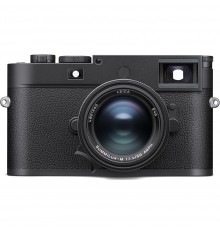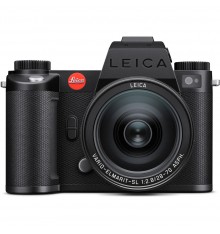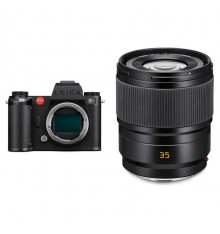The legendary Leica M6 is an icon. Intuitive, compact and discreet, it allows you to get up close to the action – and to real emotions. Since 1984, it has been the camera of choice for many of the world's best photographers, who have used it to create countless iconic images.
A milestone in the company's history
Among Leica’s rangefinder cameras, the Leica M6 has a very special role to play: From 1984 to 2002, it was manufactured almost 175,000 times and served the best photographers as an instrument to capture their view of the world. This resulted in numerous pictures which today represent a piece of contemporary history. Still handmade in Germany today, the current Leica M6 is an extremely reliable companion for all those who appreciate the conscious experience of analog photography.
The rangefinder – The heart of every Leica M camera
The rangefinder provides an exceptionally bright view with excellent contrast, and it lets you see beyond the actual frame of your final image. This gives you a wider view of the scene, and puts you in full control when focussing and exposing. The M6 uses a mechanical rangefinder with 0.72x viewfinder magnification, handcrafted from over 100 individual parts. The aperture and exposure time can be precisely determined thanks to selective exposure metering through the lens, and the light balance displayed in the lower part of the viewfinder. Focusing is done using a superimposed image method or split image method. Both are ideal for focusing quickly with extreme precision, even in poor lighting conditions.
The advantages of rangefinder photography
See more, react better. The rangefinder technology in the M6 lets you see beyond the picture frame, so you can assess the exactly right moment to release the shutter. Illuminated framelines highlight the image field for six focal lengths, arranged in pairs for 28 and 90 mm, 35 and 135 mm, as well as 50 and 75 mm. After attaching a lens, the corresponding focal length automatically appears in the viewfinder as framelines. In addition, all other framelines can be displayed in the rangefinder using the field selector. This allows you to select the appropriate focal length for your subject before releasing the shutter – and to capture your image at the decisive moment.
Iconic design
M cameras have not only been capturing iconic images for decades, they have become icons themselves. Simple elegance, absolute reliability and high-quality materials combine in the iconic design that defines every M camera. Design that stands the test of time. For instance, thanks to the highly scratch-resistant lacquer, solid brass top cap and robust leatherette that is used for the M6. In addition, the anti-reflective coating of the glass surfaces, prevents disruption from scattered light. True to the original from 1984, the new generation is adorned with the red Leitz logo.
True value endures
Trends come and go, but real values stand the test of time, as they are passed on from generation to generation. Leica cameras and lenses are a testament to the traditional values of durability, reliability and quality. They represent real, tangible quality, achieved through high-grade materials and solid mechanics. Leica has always manufactured its precision tools by hand, developing mechanical and optical masterpieces that are second to none, constantly setting new standards. Genuine, tangible quality "Made in Germany" – with the sole purpose of giving you maximum freedom in your photography at all times.
| Designation | Leica M6 |
| Camera type | Analogue rangefinder system camera (35 mm) |
| Type No. | 2248 |
| Order No. | Black: 10 557 |
| Material | Closed full metal housing, Top cover and bottom cover: brass, black finish |
| Lens mount | Leica M bayonet |
| Operating conditions | 0°C to +40°C |
| Interfaces | ISO accessory shoe |
| Tripod thread | A 1⁄4 DIN 4503 (1⁄4”) with stainless steel in the base |
| Dimensions | 138 x 40 x 77 mm |
| Weight | 575 g (without battery) |
| Viewfinder | Large, bright-line rangefinder with automatic parallax compensation |
| Parallax compensation | The horizontal and vertical difference between viewfinder and lens is compensated automatically in line with the relevant focus setting. Congruence of viewfinder and actual image. The size of the bright-line frame matches the distance: – at 2 m: the exact sensor size of approx. 23.9 x 35.8 mm – at infinity: (depending on focal length) approx. 7.3% (28 mm) to 18% (135 mm) – less than 2 m: less than film size |
| Viewfinder magnification | x0.72 (all lenses) |
| Wide- base rangefinder | Split and superimposed image rangefinder shown as a bright field in the center of the viewfinder image. |
| Shutter | |
| Shutter type | Focal plane shutter with rubber liner, mechanically controlled |
| Shutter speeds | Mech. shutter: 1 s - 1⁄1000 s Flash Synch: up to 1⁄50 s |
| Shutter release | Two-stage: Power up (activation of exposure meter) – Release. Integrated standard cable release thread. |
| Film winding | |
| Loading | Manual with quick wind lever or LEICAVIT M, motorized with LEICA MOTOR-M, LEICA WINDER-M, LEICA WINDER |
| Rewinding | Manual with telescopic rewind knob |
| Frame counter | On top of camera. Automatic reset after removal of bottom cover. |
| Focusing | |
| Working range | 70 cm to ∞ |
| Focus mode | Manual |
| Exposure | |
| Exposure metering | TTL (exposure metering through the lens), with working aperture |
| Metering cell | Silicon photo diode with convex lens to the top left behind the camera bayonet. |
| Film speed range | Manual setting from ISO 6/9° to ISO 6400/39°. |
| Metering principle | The light reflected by a metering spot in the center of the 1st shutter curtain is metered. The metering spot has a diameter of 12mm and therefore corresponds to approx. 13% of the full negative format or around 2/3 of the short side of the corresponding frame in the viewfinder. |
| Exposure control mode | Manual shutter speed and aperture setting, adjustment using LED light balance. |
| Flash | |
| Flash unit connection | Via accessory shoe |
| Synchronisation | On the 1st shutter curtain |
| Flash sync speed | 1/50s; slower shutter speeds possible. |
| Flash exposure control | Via computer control of flash unit or via guide number calculation and manual setting for the required aperture. |
| Power Supply | 2 Silver oxide button cells (PX76/SR44) or 1 Lithium battery (DL1/3N) |


























